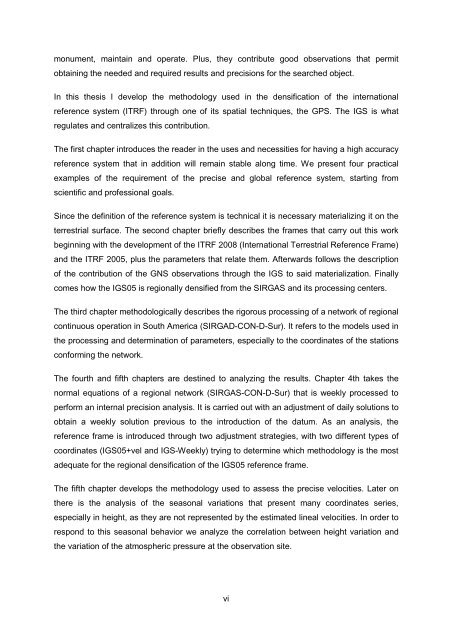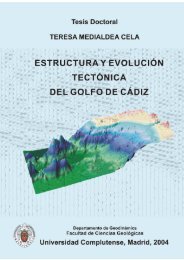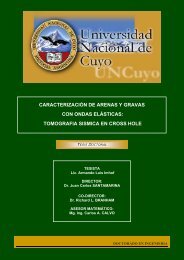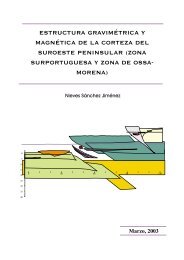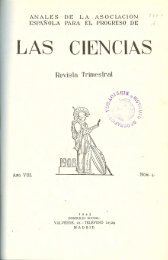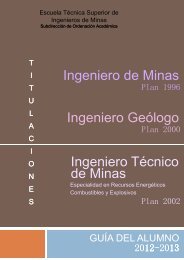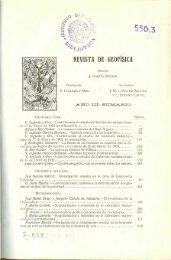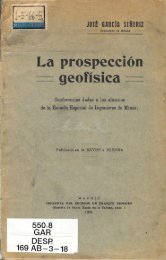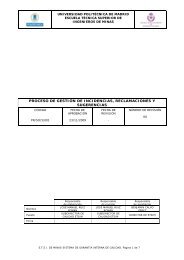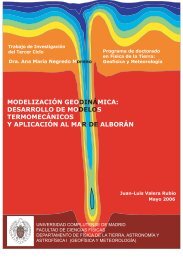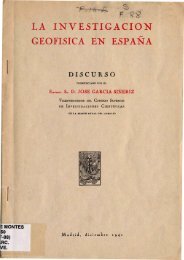Descargar PDF - ETSI de Minas de la UPM
Descargar PDF - ETSI de Minas de la UPM
Descargar PDF - ETSI de Minas de la UPM
Create successful ePaper yourself
Turn your PDF publications into a flip-book with our unique Google optimized e-Paper software.
monument, maintain and operate. Plus, they contribute good observations that permit<br />
obtaining the nee<strong>de</strong>d and required results and precisions for the searched object.<br />
In this thesis I <strong>de</strong>velop the methodology used in the <strong>de</strong>nsification of the international<br />
reference system (ITRF) through one of its spatial techniques, the GPS. The IGS is what<br />
regu<strong>la</strong>tes and centralizes this contribution.<br />
The first chapter introduces the rea<strong>de</strong>r in the uses and necessities for having a high accuracy<br />
reference system that in addition will remain stable along time. We present four practical<br />
examples of the requirement of the precise and global reference system, starting from<br />
scientific and professional goals.<br />
Since the <strong>de</strong>finition of the reference system is technical it is necessary materializing it on the<br />
terrestrial surface. The second chapter briefly <strong>de</strong>scribes the frames that carry out this work<br />
beginning with the <strong>de</strong>velopment of the ITRF 2008 (International Terrestrial Reference Frame)<br />
and the ITRF 2005, plus the parameters that re<strong>la</strong>te them. Afterwards follows the <strong>de</strong>scription<br />
of the contribution of the GNS observations through the IGS to said materialization. Finally<br />
comes how the IGS05 is regionally <strong>de</strong>nsified from the SIRGAS and its processing centers.<br />
The third chapter methodologically <strong>de</strong>scribes the rigorous processing of a network of regional<br />
continuous operation in South America (SIRGAD-CON-D-Sur). It refers to the mo<strong>de</strong>ls used in<br />
the processing and <strong>de</strong>termination of parameters, especially to the coordinates of the stations<br />
conforming the network.<br />
The fourth and fifth chapters are <strong>de</strong>stined to analyzing the results. Chapter 4th takes the<br />
normal equations of a regional network (SIRGAS-CON-D-Sur) that is weekly processed to<br />
perform an internal precision analysis. It is carried out with an adjustment of daily solutions to<br />
obtain a weekly solution previous to the introduction of the datum. As an analysis, the<br />
reference frame is introduced through two adjustment strategies, with two different types of<br />
coordinates (IGS05+vel and IGS-Weekly) trying to <strong>de</strong>termine which methodology is the most<br />
a<strong>de</strong>quate for the regional <strong>de</strong>nsification of the IGS05 reference frame.<br />
The fifth chapter <strong>de</strong>velops the methodology used to assess the precise velocities. Later on<br />
there is the analysis of the seasonal variations that present many coordinates series,<br />
especially in height, as they are not represented by the estimated lineal velocities. In or<strong>de</strong>r to<br />
respond to this seasonal behavior we analyze the corre<strong>la</strong>tion between height variation and<br />
the variation of the atmospheric pressure at the observation site.<br />
vi


